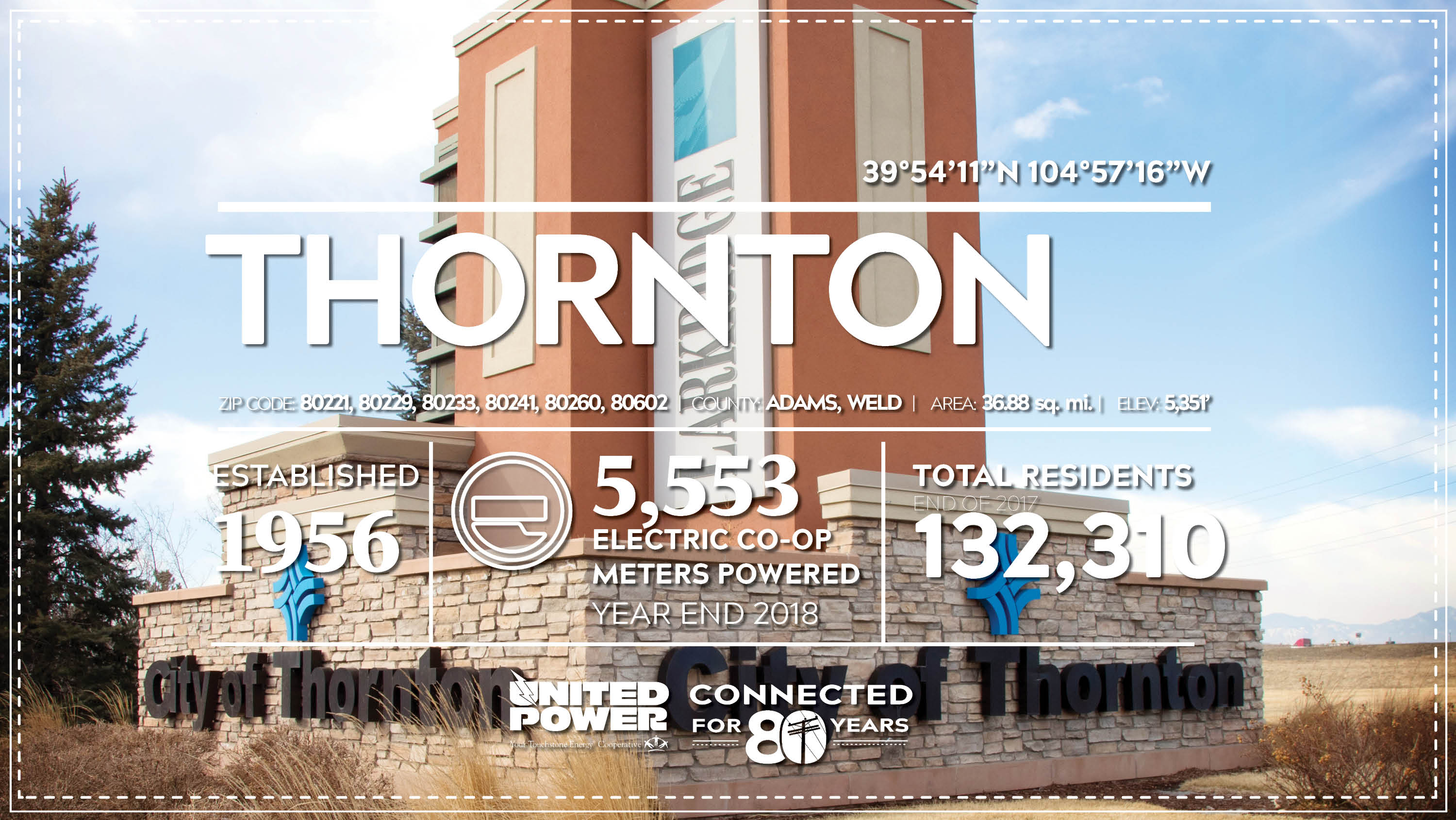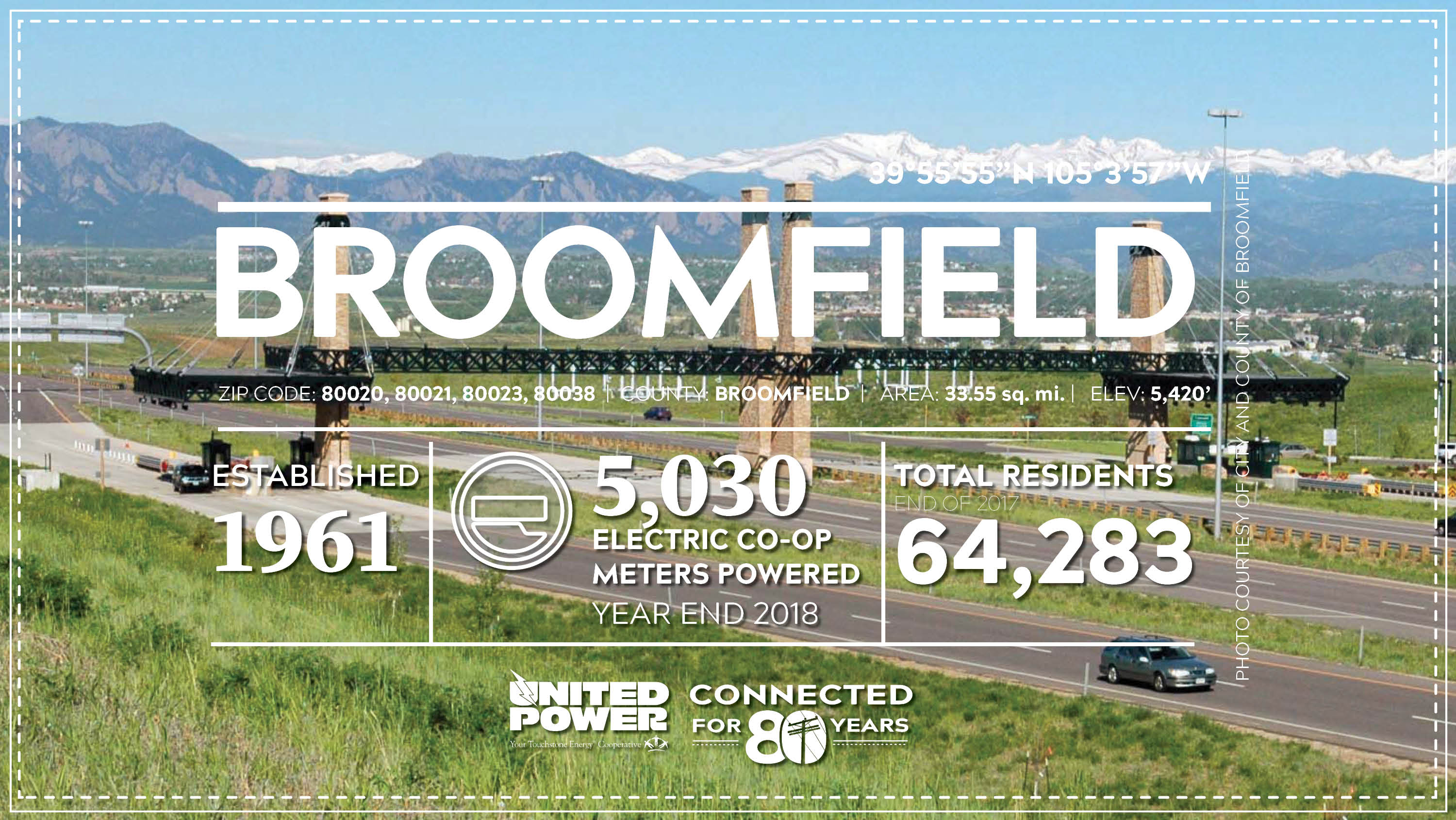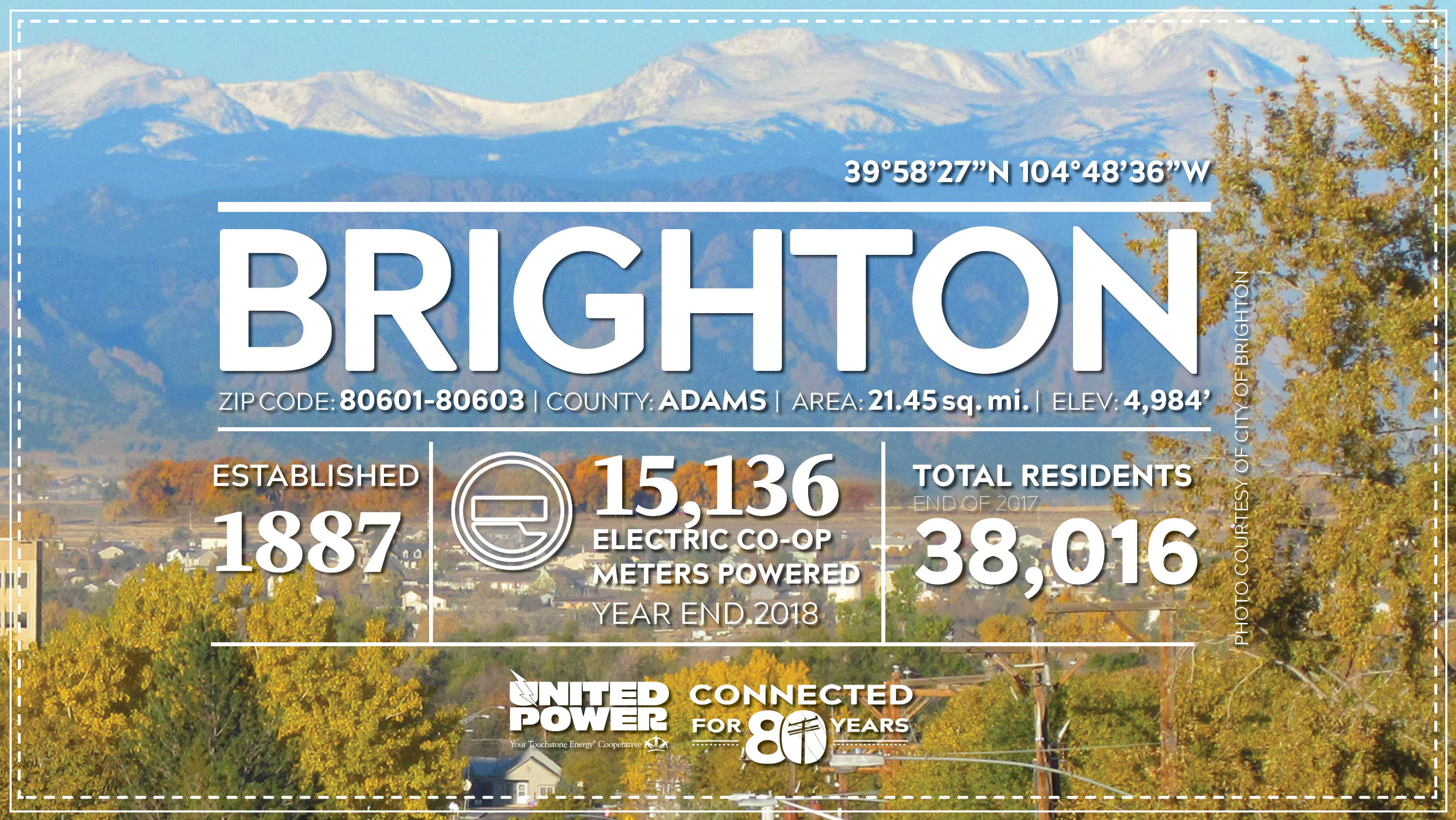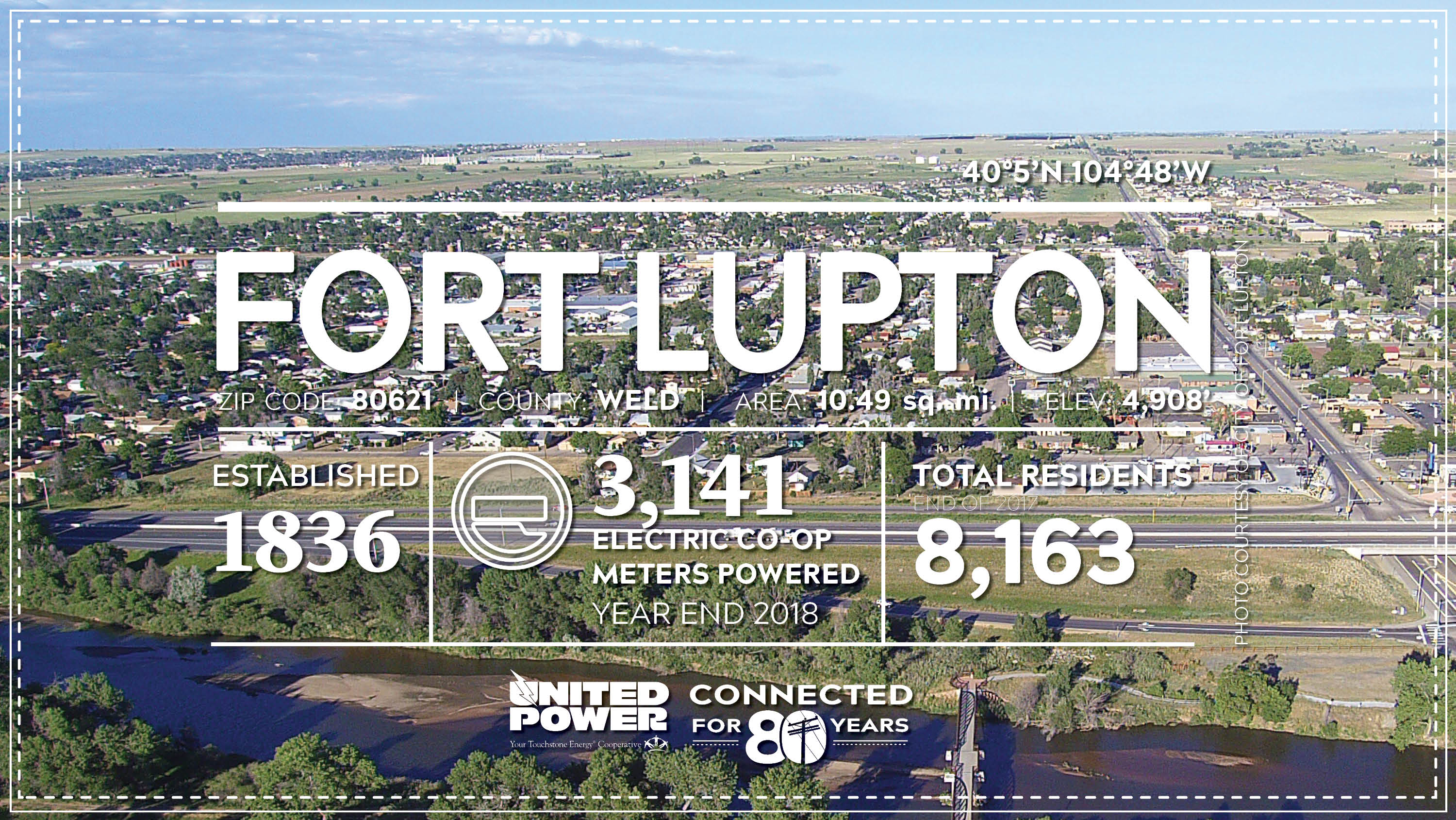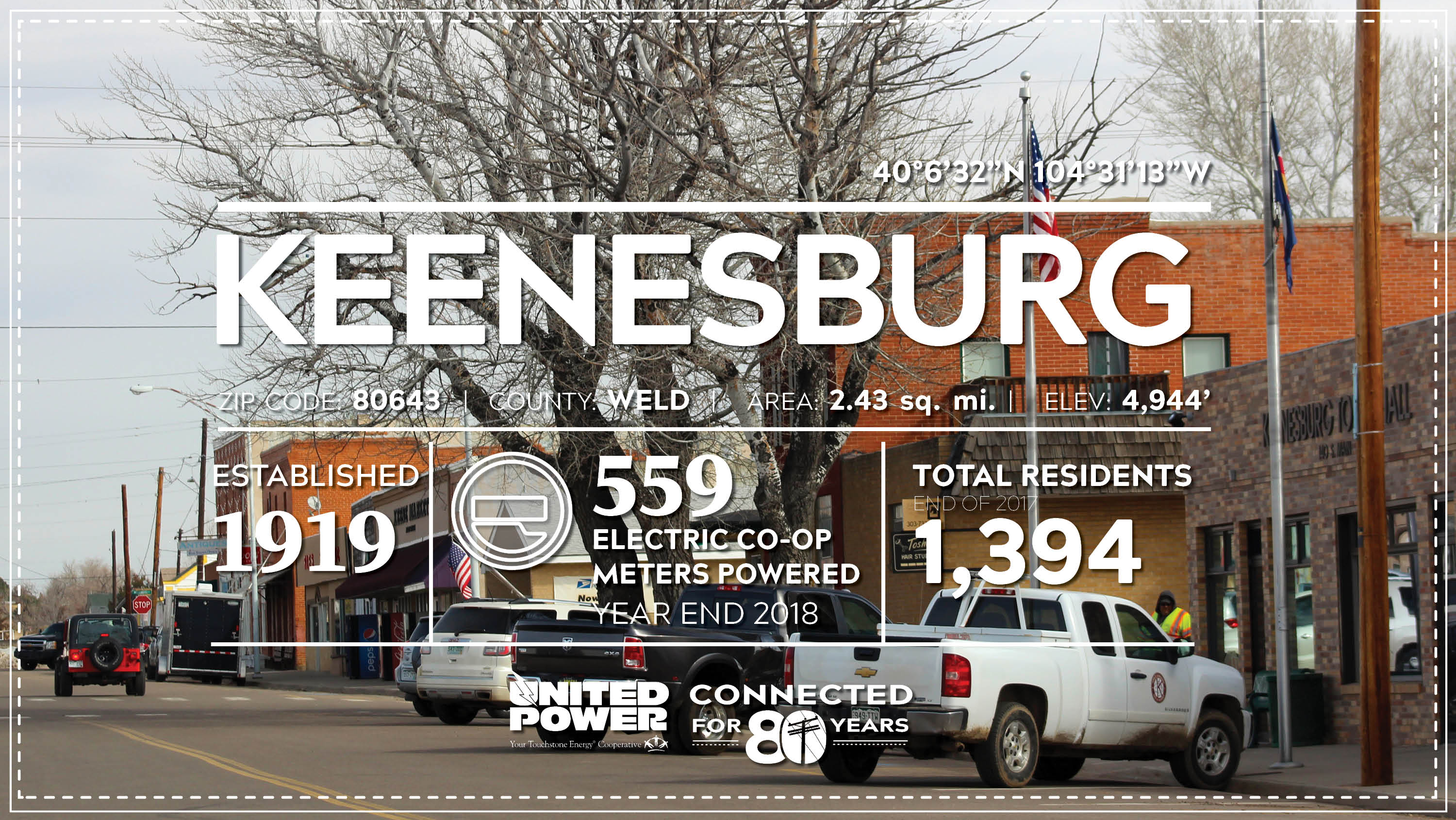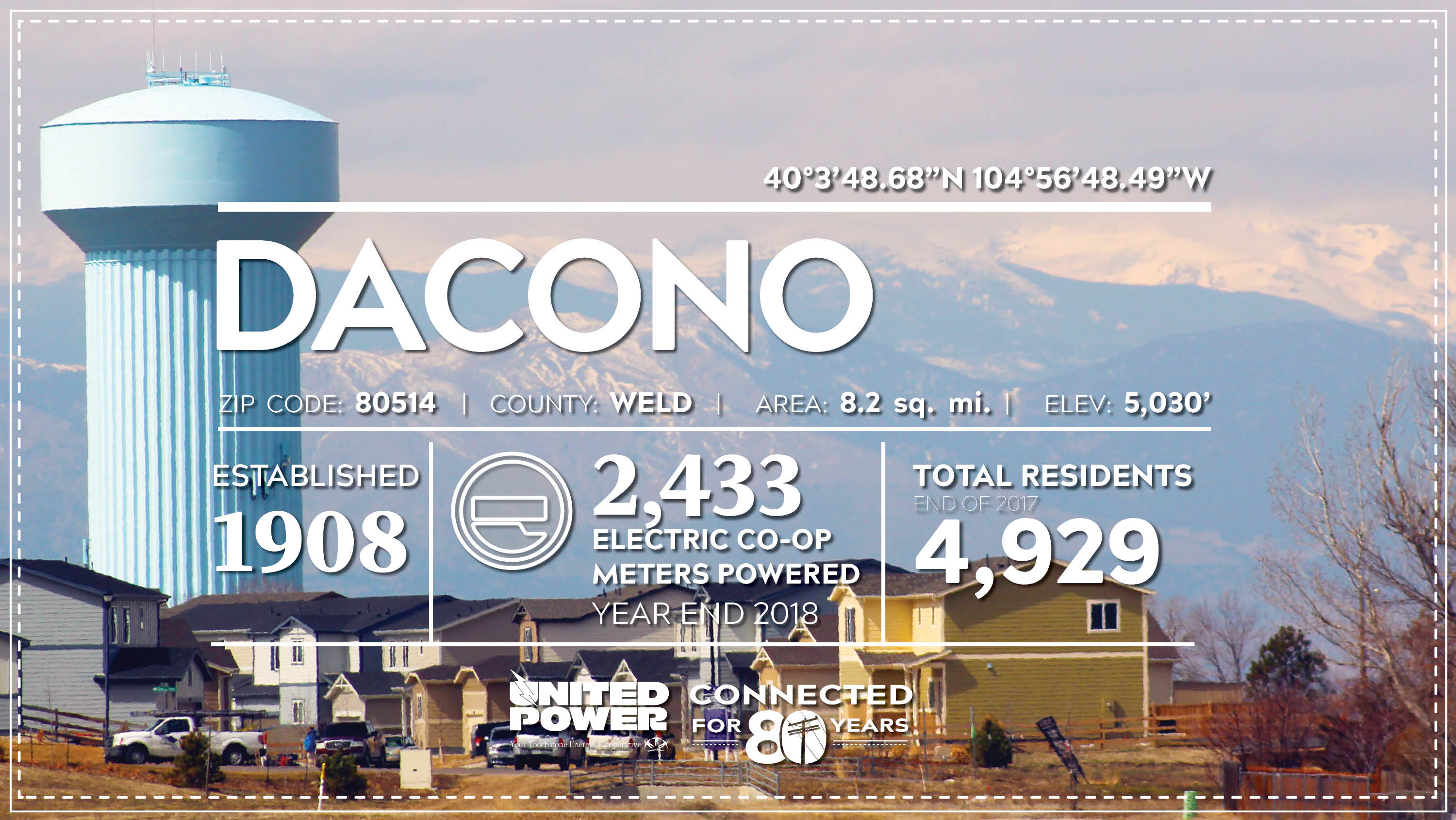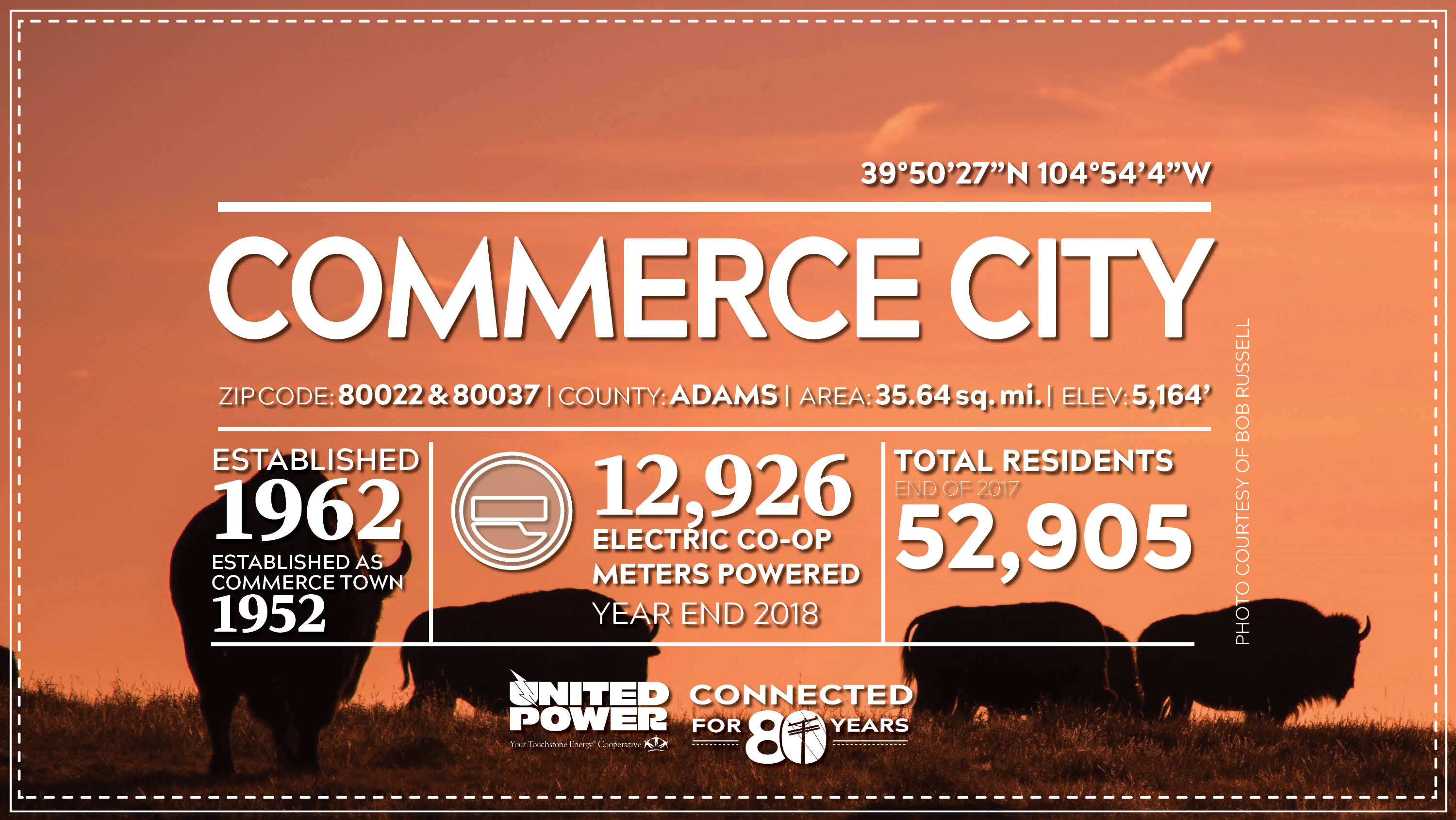/sites/default/files/styles/news_card_553x430_/public/news/MayJune_NL_BombCyclone.png?itok=S04eC2f-
The calm before a storm is often the most unsettling. A cold, breezy Wednesday morning belied a more sinister winter storm rapidly intensifying and bearing down on the Colorado’s northern Front Range. Anxious employees peered through slotted window blinds searching for early signs of the encroaching storm (dubbed a "bomb cyclone"), and linemen gathered for morning safety meetings in anticipation of a long day.
Initial signs of the storm began rolling in late morning, bringing with it a mixture of blowing rain and light snow. Within the hour, the storm transformed into a whiteout and roads disappeared underneath a layer of rapidly accumulating snow. As worsening conditions stranded travelers, highway patrol began closing major highways and warning residents to avoid travel unless absolutely necessary. Shortly after, Governor Jared Polis declared a state of emergency.
All United Power line crews were mobilized early in the morning and placed on standby in order to respond quickly once the storm moved in. The first outage alerts were triggered before noon, and before long several thousand members had been impacted. The storm was beginning to show its teeth.
Strong winds and heavy snow contributed to limited visibility and created a challenging situation for linemen traversing snow-packed roads and drifts measuring several feet deep to restore affected members’ power during the raging storm. Trucks were forced to limit their mobility, moving slowly and only when visibility cleared enough for them to proceed safely.
"Finding the road was sometimes like trying to find your hand in the dark," said Troubleshooter Jon Lundstrom. "There were moments we couldn’t even see beyond the hoods of our trucks, let alone know if we were actually on the road. I’m certain I drove through an empty field at least once."
Back at United Power’s headquarters, operations staff were carefully monitoring incoming outages through the cooperative’s advanced mapping system, SCADA, and relaying them to linemen in the field. Where possible, system improvements now allowed staff to effectively reclose certain breakers instead of having to dispatch crews to a location, freeing them to respond to more critical outages.
While nearly a third of all members impacted by storm-related outages were restored from the office, crews still needed to be dispatched to the majority. Despite uncertain conditions, linemen responded to each outage with as much urgency as the weather would allow.
"Our engineers have done a great job designing an infrastructure that allows us to be responsive without sending out a crew," said Operations Manager Brent Sydow. "But nothing can replace the value of having boots on the ground, especially when the weather turns ugly."
In total, more than a dozen crews with roughly 50 linemen between United Power and its contractor, Ward Electric, responded to just over 10,000 outage alerts over the course of the storm and late into the night. When final Ward crews were called in just before 4 a.m., most linemen had worked in excess of 19 hours to restore power. Just 23 accounts remained without power when crews arrived again later that morning.
According to advanced metrics obtained through the United Power operations team, of the 10,304 meters affected during the storm, only 2,000 experienced an outage lasting longer than 6 hours, and most were restored within 2 hours.
"Storms expose your weak points," said Sydow. "Some parts of our system normally hit hard during strong storms like this held up well. It’s a testament to United Power’s commitment to system and infrastructure improvements over the past couple years, the efficiency of our processes and the hard work of our linemen."
As far as storms go, March’s bomb cyclone was unlike anything Colorado has seen before, confirmed as the most intense storm in state history. Hundreds of thousands of residents were left without power during the storm as it paved its way through the northern Midwest and impacted travel across much of the country. More than 1,300 flights were cancelled and 1,100 travelers were left stranded.
"It takes a certain kind of person to look into a storm like that and say whatever it takes to get the job done," said Troubleshooter Kurt Westhoff. "We’re at our best when the weather is at its worst. It gives us motivation and adrenaline to go out there and get the power back on. It’s what we do; it’s why we got into this."
What is a Bomb Cyclone?
Bomb cyclones, also known as bombogensis or explosive cyclogenesis, are naturally occurring weather phenomena producing hurricane-force winds and blizzard conditions. They are formed when warm air and cold air meet under the right conditions, resulting in cyclonic movement and a sudden and sharp drop in barometric pressure over a short period of time. As pressure continues to drop, the storm intensifies. Only a handful of these weather events have been recorded, and rarely over continental locations.




